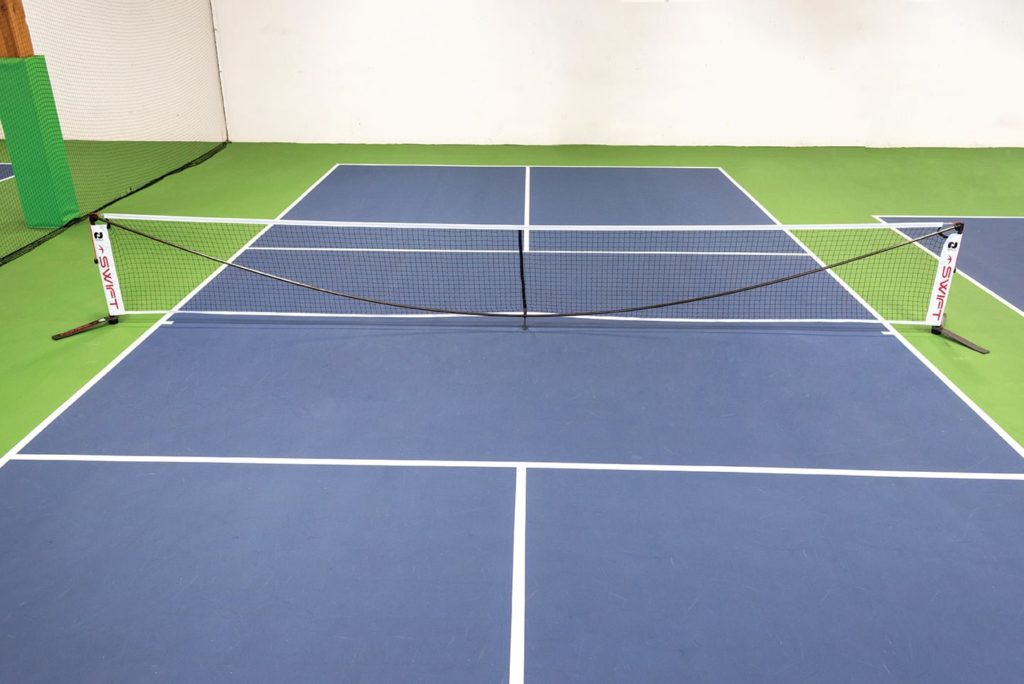Constructing a Pickleball Court Construction-- Professional Construction for Quality Play
Lasting Practices in Pickleball Court Construction You Must Know
As the appeal of pickleball continues to rise, so as well does the demand for sustainable techniques in court building and construction. This technique not only addresses environmental issues however additionally enhances the longevity and capability of the courts. From choosing environment-friendly materials to executing reliable water drainage and energy-saving illumination remedies, there are numerous methods to take into consideration. Yet, the effect of these methods prolongs much beyond the court itself. Comprehending how each component adds to a much more lasting future welcomes further exploration right into the complex balance between leisure development and environmental stewardship.
Picking Eco-Friendly Products
Selecting environment-friendly products is a critical action in the building and construction of lasting pickleball courts. The choice of sustainable materials not just lessens environmental effect but additionally boosts the longevity and performance of the court. Secret materials consist of reused rubber for the surface area, which uses superb durability and shock absorption while drawing away waste from landfills.
Additionally, utilizing locally sourced materials reduces transportation discharges and sustains regional economies. Pickleball court construction. Using native hardwoods for fencing and seats can provide a sustainable aesthetic while guaranteeing strength against the elements.
Including permeable products for court structures can better add to sustainability by allowing for all-natural water drainage and minimizing drainage. These selections not just secure neighborhood environments but additionally advertise healthier play environments.
Reliable Water Drainage Solutions
While the selection of environmentally friendly materials is necessary, executing efficient drainage options is equally essential for maintaining sustainable pickleball courts. Correct drain not only shields the court surface area from water damage but also minimizes erosion and drainage, promoting environmental honesty.
Reliable drainage systems can include absorptive paving, which allows water to infiltrate the ground instead of pooling on the surface. This decreases the probability of standing water, which can result in mold and mildew and other maintenance concerns. In addition, including strategically put drainage channels and swales can direct excess water far from the court location, ensuring a dry having fun surface area and preventing soil disintegration.
Making use of indigenous vegetation in the landscaping around the courts can even more enhance water drainage by soaking up excess water and minimizing overflow. These plants require much less watering and promote biodiversity, aligning with lasting techniques.
Additionally, it is essential to frequently keep the water drainage system to guarantee its long-term performance. This consists of cleaning particles and tracking for obstructions. By prioritizing efficient drainage options, pickleball court fabricators can dramatically add to the sustainability and long life of the center, ultimately benefiting both players and the environment.
Energy-Efficient Lights Options
As the demand for pickleball continues to grow, incorporating energy-efficient illumination choices into court layout has ended up being significantly vital for sustainability. Traditional lighting systems commonly eat too much power, contributing to higher operational prices and ecological impact. Adopting modern-day, energy-efficient technologies is essential for both brand-new constructions and improvements.
LED (Light Emitting Diode) lighting sticks out as a premier choice due to its durability and power financial savings (Pickleball court construction). Compared to standard lighting, LEDs utilize approximately 75% much less energy and can last up to 25 times much longer, considerably reducing upkeep costs. The directional nature of LED lights minimizes light contamination, making certain that lighting is focused on the court rather than bordering locations.

Sustainable Surface Alternatives
Discovering lasting surface options for pickleball courts has obtained traction among gamers and home builders alike. The focus on environment-friendly products not just straightens with the expanding ecological understanding yet also enhances the performance and sturdiness of the courts.
This material offers superb shock absorption, decreasing the risk of injuries for gamers while advertising sustainability. These floor tiles are easy to change and install, and their flexibility enables for different court setups.
All-natural lawn courts are also arising as a sustainable option, promoting biodiversity and reducing the heat island effect. Nevertheless, they need regular maintenance and water, which might not align with all sustainability objectives.

Water Conservation Strategies

Another efficient technique includes the installment of rainwater harvesting systems. These systems store and gather rainwater for usage in maintaining court surface areas and landscape design. This strategy not just conserves drinkable water but likewise reduces reliance on community resources.
Moreover, employing drought-resistant landscaping around the courts is crucial. Native plants need much less water and are better adapted to neighborhood environment problems, thus reducing total water usage. Furthermore, utilizing effective watering systems, such as drip irrigation, makes sure that water is delivered directly to plant origins, lessening dissipation and waste.
Verdict
Including lasting methods in pickleball court building and construction considerably contributes to ecological preservation and resource efficiency. Using green products, applying efficient drainage solutions, and taking on energy-efficient illumination alternatives can significantly reduce eco-friendly effect. Checking out lasting surface options and using water preservation methods improve the total sustainability of these leisure centers. By prioritizing these methods, the building of pickleball courts can straighten with wider ecological objectives while promoting durability and capability within communities.
As the appeal of pickleball proceeds to climb, so also does the demand for sustainable practices in court construction.Selecting environmentally friendly products is an essential action in the building and construction of sustainable pickleball courts. By prioritizing energy-efficient illumination website link alternatives, pickleball court constructors can add to an extra lasting future while satisfying the needs of players and stakeholders alike.Including lasting surface alternatives not just boosts the efficiency of pickleball courts however additionally leads the way for implementing efficient water conservation techniques.Incorporating lasting techniques in pickleball court building considerably adds to environmental conservation and resource performance.